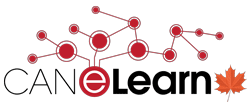This entry was crossposted from https://k12sotn.ca/blog/2021-22-level-of-k-12-blended-learning-activity/
As we have discussed in previous reports, data on the level of blended learning has been collected in one form or another since the 2014-15 school year. However, the vast majority of jurisdictions do not formally track participation in blended learning programs and the data that is collected is quite unreliable. Previous editions of this report have indicated that jurisdictions such as New Brunswick and Ontario are able to provide data based on the number of student accounts in the provincially licensed learning management system, but that doesn’t necessarily mean that those students are actually using those accounts or are using those accounts for the purposes of blended learning. That data also excludes those students and teachers that may be engaged in blended learning activities, courses, and programs that do not make use of the provincial learning management system. Additionally, blended learning activity has been estimated from data collected in the individual program surveys, but this instrument is only circulated directly to e-learning programs (i.e., mainly programs that were primarily engaged in distance and/or online learning). So if Villanova Junior High in Conception Bay South, Newfoundland and Labrador or Forest Glade Public School in Windsor, Ontario or Okanagan Mission Secondary in Kelowna, British Columbia was engaged in blended learning there is a strong possibility that they would not have been aware of this survey to even consider completing it. As such, previous estimations of blended learning activity only just began to scratch the surface of the true level of blended learning occurring in most jurisdictions.
While there is no presentation of the overall K-12 e-learning activity data for 2021-22 or comparison of that data to previous years, the data that has been collected is still presented in the full jurisdictional profiles (as the data can be situated appropriately in those profiles). It is also worth mentioning that the blended learning landscape in each individual jurisdiction has at times been useful in understanding that jurisdictions’ response to the emergency remote teaching, and later remote learning, that occurred over the past three school years.
